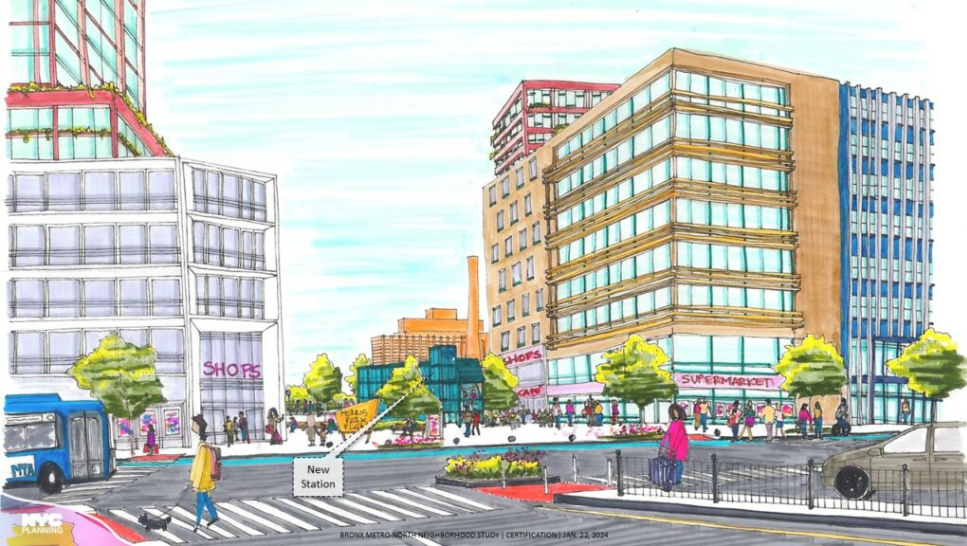
Sketch courtesy of The NYC Department of City Planning
NYC Department of City Planning recently voted in favor of the Bronx Metro-North Station Area Plan which, as previously reported by Norwood News, aims to bring nearly 7,500 new homes, including 1,900 permanently income-restricted units, and 10,000 jobs to areas around four new Metro-North stations planned for the East Bronx neighborhoods of Parkchester/Van Nest, Morris Park, Hunts Point, and Co-op City.
The latest news on the plan was recently reported by YIMBY. As reported previously, according to City officials, the new Metro-North stations, expected to open in 2027, are planned to connect East Bronx residents to opportunities across the borough and region while reducing car usage.
The approved plan encompasses several components aimed at transforming the neighborhoods surrounding the new stations. According to City officials, the plan will allow for residential development in sections of Parkchester/Van Nest that are currently restricted to commercial and manufacturing uses, while also increasing permitted residential density in parts of Parkchester/Van Nest and Morris Park. Additionally, they said the plan will strengthen commercial corridors and support major institutions, like hospitals, to stimulate job growth in the area.
City officials said the plan also explores the possibility of establishing a new STEAM (science, technology, engineering, and mathematics) high school, and includes infrastructure and public space improvements around the new stations.
New York City Parks Commissioner Sue Donoghue said of the latest plan, “The Bronx Metro-North Station plan represents another crucial investment for The Bronx and the creation of vibrant community neighborhood space.”
She added, “Accessible public spaces strengthen the social fabric of neighborhoods, and this ambitious plan will expand public space access for Bronx residents while connecting them with thousands of great jobs, public transit, and affordable housing. The Adams administration continues to provide opportunities and make investments that will benefit The Bronx and New York City for generations to come, making our communities more livable, accessible, and equitable.”




